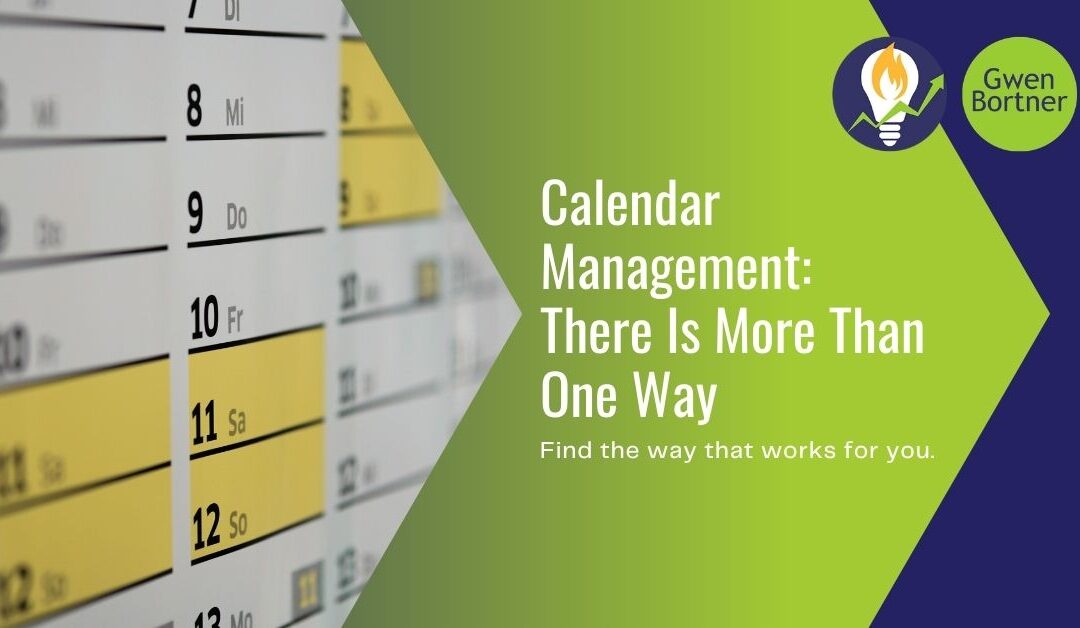
by Gwen Bortner | Operations
If you’ve been feeling like your business is a little bit chaotic or scattered, it’s time to get some consistency. A significant factor in the success of any business is having consistent processes; not only will this increase productivity, it also improves your relationships with clients or customers and gives you a clear path to growing your business. The regular processes in your business need to be streamlined in order to be efficient and productive.
Here’s how to get there:
1. Figure out what you’re already doing well.
Being more consistent isn’t about finding a whole new way of running your business; it’s about capitalizing on what you’re already doing. You already have a product or service that you offer to every person who comes into contact with your business. Figuring out HOW you deliver that product or service is the first step to consistency. If you’ve been trying different ways of doing this, pick the one that has worked the best for you and your customer and go from there.
For example: Let’s say you have a business that involves 1-on-1 consulting sessions. Some of your former clients have sent you an e-mail, and you’ve gone back and forth with your separate calendars, trying to figure out a time that works to meet. Maybe during that process you’ve even wound up giving away quite a bit of free advice, to the point where some clients have walked away without booking a session. Another time, you tried using a shared calendar app, and booking that appointment was a smooth process that led to a successful consulting appointment. Tha shared calendar app needs to be your process from now on, with every client.
2. Stop making exceptions.
If you want to grow your business, you can’t offer a unique product or service to every customer. You need to reduce the variables between customers so that you can streamline your systems and create consistency. If you have been creating a custom package for every customer, instead try offering some options like add-on packages or a limited number of custom choices. This way you can give your customers a product that feels personalized, but you don’t have to start from scratch every time.
For example: Let’s say you have a business selling t-shirts. When you first started, maybe you would design anything on a shirt that a customer wanted. Now that your business has grown to a certain level, it makes more sense to choose your 10 most popular designs and only offer those, on a limited number of t-shirt colors. You will be able to sell more shirts because you can produce them more efficiently, but having those choices still makes your customers feel like they are getting a unique product when they come to your shop.
3. Refine and perfect your systems over time.
Just because you’re working on consistency doesn’t mean you have to lock yourself into a situation that never changes. As you go through this process of repeating your systems with consistency, you are naturally going to find ways to refine those processes and make them more streamlined. Take note of this, and be willing to adapt your processes over time. This will only add to your overall efficiency.
For example: If you run a business that involves packing and shipping a physical product, your method of shipping may change over time. You may have started with a regular home printer and the USPS website, but over time you may discover that you could outsource your shipping to a third party and free up more of your time to do other tasks. There’s no need to stick to a system that no longer works for you – this is an opportunity to build new consistency into your business.
4. Document your systems as you get comfortable.
If you’re stuck in your business, it’s often that you’re wasting time trying to remember all the things you need to do, or reinventing the wheel every time you do them. Documenting the processes can help you take those tasks off your mental load now, and also assign them to someone else later. Doing this will help you eventually hand off those tasks to someone else, such as an employee or an independent contractor. This is what makes it possible for you to scale, because you have processes that can expand to serve a bigger audience and you can hire employees to do them over time.
For example: A task management app like Trello or Asana can be a good place to document the steps in your processes, but you can also just use a Word or Google doc to accomplish the same thing. The idea is just to get your process down in writing, so that you can eventually hand that To Do List over to someone else, and stop giving it prime real estate in your own head.
5. Get help from an outside source.
It’s often hard to identify your consistent business processes internally – you have gotten so comfortable with doing all the work of your business that you don’t even realize what you’re doing most of the time. Figuring out systems is one of my stronger gifts, and I still struggle with it within my own business. It’s hard to DIY this process, but it’s also hard to hire someone to do it entirely for you. The best solution is to hire someone to work WITH you to identify and create these processes within your business. They can ask questions to get you started, and then also watch what you do as you complete your business tasks. Working together, the two of you can figure out your existing processes as well as ways to streamline them for more consistency.
If you’re wondering whether consistent processes would improve YOUR business, it might be time to get some clarity. I have a free GEARS Assessment, which will walk you through the process of evaluating your business in five key areas in order to determine which areas would benefit from some improved consistency.
Click HERE for the free gears assessment to get clarity in your business and start leveraging the power of consistency.

by Gwen Bortner | Operations, Tasks & Goals
For as long as I can remember, my productivity has been guided by two things: my task list and my calendar. Depending on my role, one would always be the more dominant over the other. However, over time I have learned that managing them in tandem is almost always the most productive.
There are multiple ways to leverage your calendar to maximize productivity. By understanding the options, the pros and cons of each and your personal work style, you are more likely to select a method that leads to long term productivity.
Chunking Time
Breaking your day into chunks of time to increase productivity is not a new concept. Even so, it is not as widely discussed as some other methods of time/task management.
The basic concept is rather simple:
- Break your day into functional chunks of time (usually 30 – 120 minutes).
- Analyze your levels of focus and productivity for each chunk.
- Assign types of activities to each chunk of time in order to best utilize that time slot.
- Only do those activities until they are done or time is up (whichever comes first).
This type of chunking can be particularly helpful when you have lots of tasks to do and certain types never seem to make it to the top of the list. Even if they only get 30 minutes each week, it is probably more than they would get otherwise.
The downside is, this version might be too restrictive for some types of business ventures.
Another variation of chunking time is to look at bigger chunks of time (1/2 day or full day) and assign larger groups of activities to each. For example, to minimize interruptions, appointments are only to be scheduled on Tuesday afternoons or Thursday mornings. Monday mornings are for planning, strategizing and prepping for the week ahead and so on.
This version has more flexibility within the chunks of time, but still has enough structure to create a framework for productivity.
Another upside is if you are working with others, either in-person or virtually, team members can also have a reasonable idea of what to expect and how to work with you effectively.
The challenge is that it can become too restrictive making scheduling challenging or difficult to complete certain tasks.
Meetings First
If your work requires you to participate in a large number of meetings or appointments, it may make better sense to start with getting those in your calendar first. You can still leverage a bit of the chunking concept by limiting the times people can schedule meetings, but this approach assumes that a large percentage of your work calendar is open.
The challenge is this method can make it difficult to get any task work done. However, a way to minimize this challenge is at the end of each week, block chunks of task specific time for the following week so very few additional appointments can be scheduled. This allows your clients and associates to have reasonable and flexible access, while at the same time ensuring you have some time for task work.
Obviously this method is best for roles that require at least as much, if not more, time allocated to meetings as opposed to getting tasks done.
Scheduling Tasks
Another method for using your calendar to increase your productivity is to actually make an appointment with yourself. Most of us are pretty good at showing up at the designated time/place for a meeting with another person. The concept is to apply the same rigor to your most important tasks. For some, leaving the office and working in a remote location like a library or coffee shop helps in making the “meeting” happen.
This is a great method for who automatically break projects down into milestones or steps and can easily place them on the calendar weeks and months in advance.
The challenge is to hold firm on your own appointments. It can be easy to convince yourself to “reschedule” when something else comes up, but if you are not careful a task appointment will get regularly rescheduled and never get done.
Block and Tackle
The idea of blocking time and tackling tasks is a method that can be used in combination with some of the previous calendar management concepts or on its own. The idea is first thing in the morning to look at the day ahead, given the appointments, work blocks, etc. on the calendar, assign the remaining time slots (usually smaller slots like 15 – 60 minutes), to very specific tasks.
This method works well in concert with other time management techniques like the Pomodoro method. It is also a great way to ensure you make time for your personal activities, like running errands, or ensuring you get to important but less urgent tasks.
Mash-up Methodology
Personally, my favorite is to create a mash-up of several methodologies. I am a firm believer in systems, but I also know that customization is often the key to success. Rarely does one system fulfill all of a person’s needs. But when you combine elements, you get the best of both worlds — systems and customization.
I personally combine the “Meetings First” and “Block and Tackle” methods. Although I loved the concept of chunking time, I could never make it work for myself. As a natural project planner it would seem like scheduling tasks into the future would make sense, but I know that I am not good about honoring appointments with myself. So everything ended up getting moved around anyway. The combination of “Meetings First” and “Block and Tackle” gives me just the balance I need.
The Reality of Managing Your Calendar
The reality is no system is perfect, but systems invariably increase our productivity. We also all have the same number of hours in a day. The difference is seen in how those hours are utilized.
When you realize that your tasks are ultimately part of your calendar, it becomes so much easier to have them work together. And when your calendar and tasks are working together, you will feel less overwhelmed and get so much more accomplished.

by Gwen Bortner | Office Productivity
You start your day feeling excited about a project you’re going to work on for your business. You start working, and after a little while one of two things might happen:
-
You get stuck on an idea and you’re not sure where to go with it; OR
-
You get some sort of interruption in the middle of your working time (email alert, phone ringing, your kid needs something, etc.)
Is this scenario familiar to you? What happens NEXT?
Understand your losses
At this point, you fall down a rabbit hole of distraction. You check your email, answer the phone, browse Facebook “to get some ideas,” or even just get up and switch the laundry or start lunch because you think you need a break.
You are actively working against your own success.
You have lost time, twice:
- The first amount is the time it took you to actually give in to that distraction (20 minute phone call, 30 minutes on Facebook, 10 minutes checking email, etc.).
- The second amount is the time you lost switching back and forth between two tasks; this is the actual time your brain takes to catch back up when you force it into a state of context switching.
Though you might understand the first loss, it’s my guess that you didn’t even realize you were losing that second block.
Get clear.
This table illustrates Todd Herman’s research on context switching:

No matter how much time you have to complete any given task, you automatically lose more than half of it just by adding another task into that time frame. The extra 20% goes to your brain, to allow it to mentally shift gears. As you can see, adding more tasks doesn’t grow in even amounts; the amount of time you lose to context switching increases exponentially every time you add another task.
Let’s say you have one hour to write a blog post. If you give in to 5 interruptions during that hour, you’ll actually only get 3 minutes to work on that blog post out of the whole hour, and you’ll lose 48 minutes of it to context switching. No wonder it feels like you never have enough time to do your work!
Improve your Focus.
How can you solve the problem of context switching?
Make it a habit to turn off your phone, close your browsers, and tell your family members not to interrupt unless there’s an emergency when you’re working. Give yourself the time you need in order to really do your work, and you’ll be amazed at how much more time you feel like you have, because you didn’t lose it to context switching!
How will YOU give yourself the time and space you need to get your work done? If you’d like a weekly reminder to focus on your priorities and take action to move you toward your goals, sign up below for my Weekly Course of Action e-mails. Let’s tackle this, together.

by Gwen Bortner | Office Productivity, Tasks & Goals, Tips & Tricks
A planner and To Do list are great tools for helping us be more productive, but sometimes we need an extra boost to keep us focused.
I have learned that when a similar idea or concept pops up repeatedly in my life, that is a clue that I should be paying attention. When a friend talked about using a timer for productivity and then I heard about the Pomodoro Technique, I decided I should give this a try.
The Process
As with all good productivity hacks, the process is simple: set a timer for a predetermined time and work until the timer goes off. Then set a second timer for a much shorter length of time and take a break. Determining the “correct” length of time is the tricky part.
My friend Edie accidentally discovered her optimal time while working between loads of laundry. The length of her dryer cycle allowed her to get quite a bit of work done while the time folding the laundry gave her mind a break from the task she had been concentrating on. When it was done, she was ready to go again. Through this process, she discovered she could work on tasks that required deep concentration for more total productive hours in a day by breaking it up into smaller chunks.
Pomodoro Specifics
The Pomodoro technique works around 25 minute intervals, but ultimately, I think each of us will have a different amount of time that will maximize our effectiveness. For myself, I find 50 minutes on, 10 minutes off to work surprisingly well. This is how I implement the system:
- Because most of my work is done at the computer, I utilize an online timer at TimeAndDate.com.
- I set up two timers: one for my work (50 minutes) and one for my break (10 minutes), and set them to start in sequence.
- I pick a task from my task list (or several if I think I can get more than one complete), start the timer and work on them until the alarm sounds.
- Then I take a break — browse social media, refill my water, use the restroom — until the second alarm sounds.
- I repeat Steps 3 & 4 until my tasks are complete or my work is done!
Why it Works
Most of us can focus for longer periods of time, but by breaking our time into smaller chunks, we are able to stay fresher and more alert. It also allows us to put off the things that might normally distract us. If the next break is no more than X minutes away, we can wait until then to engage in the “distraction” activity.
Most importantly it gives us a focus for getting a task (or tasks) done in a limited period of time. It is very easy for work to expand to fill the time that is available! By keeping those boundaries smaller, we are more likely to be efficient in the work in which we are engaging. A perfect example is this post — done in one work cycle where otherwise it might take 2 hours or more!
Give it a Try
Honestly, I don’t use this technique all the time. But when I find it hard to get actively engaged or feel like my productivity is low, I turn to my timer. I was skeptical when I first heard of it and it took some tweaks to figure out the correct balance of work and break time for me, but in the end I know this discovery has allowed me to be more productive in many ways and at times that would have otherwise been lost to distraction.
Let us know your results: Give this technique a try for a day (if you don’t already) and share what turned out to be your best balance of work and break time.

by Gwen Bortner | Office Productivity
These days, people treat multitasking like it’s a special talent; if you’re good at doing multiple things at once then that must make you a valuable and productive worker, right? Actually, that’s completely wrong.
Multitasking isn’t making us more productive; in fact, it’s doing exactly the opposite. According to INC, multitasking leads us to:
- a 40% drop in productivity
- 50% more time taken to accomplish a single task
- 50% more errors made while doing that task
So even though it may feel like you’re accomplishing more (because you’re working on more than one thing), you’re actually losing quite a bit of productivity when you focus on more than one thing at a time.
The Curse of Creativity
So many of us who lean toward the creative side of things seem drawn to multitasking. It’s not as much fun to focus on one thing at a time when there are so many (new! shiny!) distractions everywhere! Even in our personal hobbies, we often have multiple projects going at any given time, because it’s more interesting to start something new than to slog through something you’ve been working on for a while.
Context Switching
Though we often refer to it as multitasking, the real culprit here is context switching. The idea is that your brain is moving back and forth between thought processes or activities, even if technically you’re only working on one thing. For example: you’re writing a blog post, but your phone dings in the middle of it to let you know you’ve got a message on Facebook, so you stop to check that, and while you’re there you see an ad for those new shoes you’ve been wanting, and by the time you look at the clock you realize you’ve just wasted 30 minutes doing nothing at all.
Do you frequently find yourself jumping from one thing to the next, or are you able to remain focused on one task until it’s as complete as it can be in the moment? Read on for tips on how to increase your productivity by eliminating context switching from your daily routine.
Tips to Minimize Context Switching
- Block out your time. Set aside time for the things that take up time in your day: work tasks, personal or home-related tasks, and even things like checking email or browsing social media. You may tell yourself you’re “not going to check Facebook” during your working time, but let’s face it: you’re doing it anyway. By setting aside “Facebook time” on your calendar, you’re giving yourself permission to do that activity, but during the appropriate time for it.
- Keep your To Do list short. On any given day, you should have a list of no more than three important tasks you want to complete that day. By doing this you can give yourself the time you need to really devote your attention to those tasks, but if you overload your list with too many To Dos, you’ll feel tempted to work on them simultaneously or to switch between them before really completing anything, just to be able to say you worked on each item that day.
- Turn off the distractions. Our phones are like a window to the world outside, but they’re also a pipeline to distraction. You don’t NEED to be notified of every social media post, email, or even text message at any given minute of the day. If there’s a real emergency, someone will pick up the phone and actually call you. Turn off notifications on your phone during working hours, and make sure you don’t have any alerts on your computer.
- Get off the Internet. Having multiple tabs open while you’re working makes it too easy to just “click over for a minute” to check on a website that might distract you from your work. Cut out random Internet browsing during your work time. If you need to maintain a social media presence for your business, try to remember that you’re there for business – post to your own profile or group, but don’t get distracted reading other peoples’ posts.
Bonus “hack” for Facebook: set your Facebook page up so that it only shows you the groups you’re using for work or business, and hides all your personal feeds. That way you can check in for work and check back out again without getting distracted by photos of your best friend’s baby or your cousin’s dinner plate.
What’s the biggest “distraction trap” for you when you’re trying to be productive? Just knowing the answer to that question is the first step in avoiding that distraction in the future!
Would you like to train yourself to focus on what’s most important, and to work on the things that make the most difference in your life and business?
Join us in May for the Small Biz Book Club, where we’ll be reading Greg McKeown’s book, Essentialism. You’ll get a lot of great insights on how to improve your productivity and reduce distraction. Click here for all the details, or sign up using the box below:








